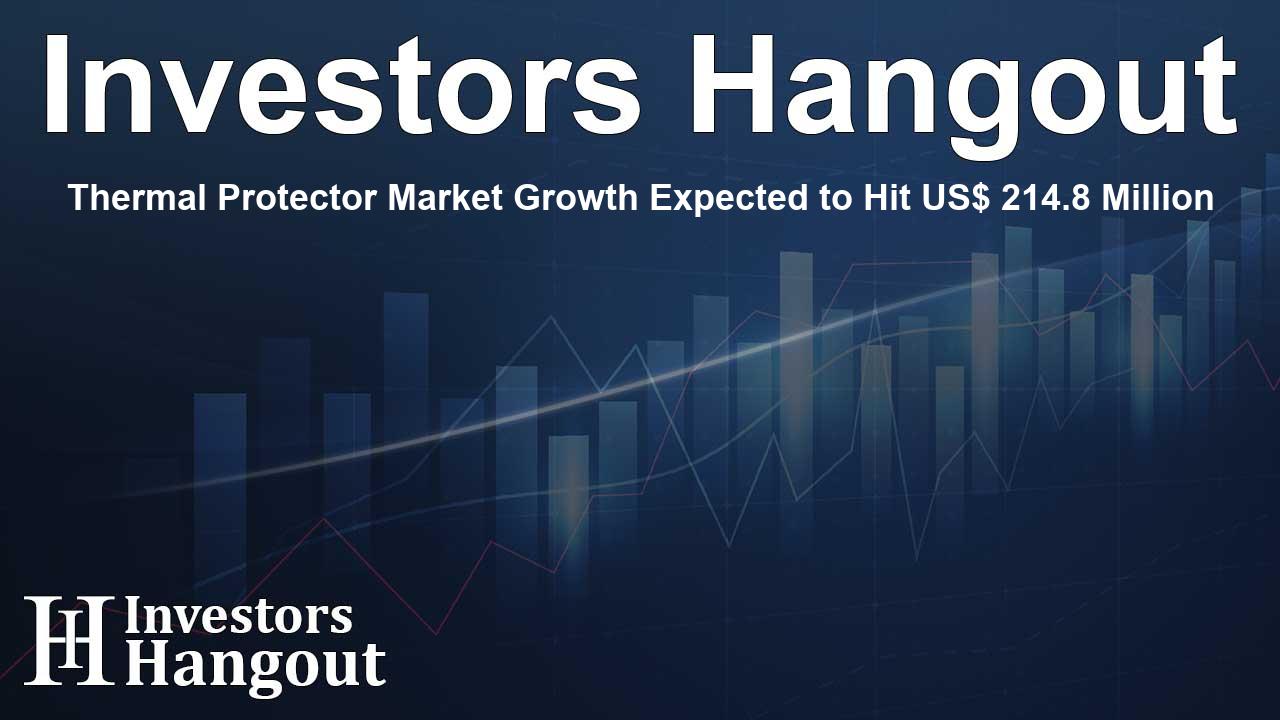Thermal Protector Market Growth Expected to Hit US$ 214.8 Million

Understanding the Rapid Growth of the Thermal Protector Market
The thermal protector market is experiencing an impressive surge, currently valued at US$ 117.8 million in 2024 and projected to reach US$ 214.8 million by 2033, showcasing a remarkable compound annual growth rate (CAGR) of 6.9% from 2025 to 2033.
Investment Trends Driving Market Expansion
Major players within this dynamic market are ramping up their production capacities to cater to surging global demand. ON Semiconductor is set to invest over 2 billion USD in capital expenses by 2025. At the same time, Nexperia's plan to augment their global production by 20 billion devices annually reflects the booming anticipation within this space. Such robust investment strategies elucidate a promising outlook, with competitors racing to innovate for capturing maximum market share.
Key Players in the Thermal Protector Landscape
Infineon Technologies is advancing its new 300-millimeter semiconductor plant, expected to drive 2 billion EUR in revenue from silicon carbide products. Texas Instruments is growing manufacturing capabilities, focusing on the Utah facility, anticipated to generate 4 billion USD annually. The competition is further heating up with OEMs like STMicroelectronics and Wolfspeed unveiling strategies to scale production capacity to match market needs.
Sector-Specific Demand Elevating Market Significance
Electric Vehicles Transforming Market Dynamics
The shift towards electric vehicles is the foremost force propelling market demand. EVs are anticipated to contain over 3,000 semiconductor chips by mid-decade, with battery designs likely featuring more than 100 temperature sensors each, ensuring optimal thermal management and safety. Coupled with the extensive deployment of DC fast chargers, this burgeoning ecosystem is set to spur demand for thermal protection components, including over 25 million units by 2025.
Consumer Electronics and Industrial Automation
The trend of miniaturization in consumer electronics contributes significantly to the thermal protector market. Chips tasked with thermal protection are becoming essential in an array of devices, from smartphones to gaming consoles and virtual reality headsets. Each product iteration necessitates sophisticated thermal management solutions to maintain optimal functionality amidst high power densities.
In the industrial realm, the rise of smart factories is amplifying demand for thermal solutions. An estimated 500,000 new industrial robots will be embedded with multiple thermal protectors for enhanced motor safety. Also, the industrial motor market stands to demand over 800 million thermal protection units in compliance with energy efficiency standards.
Emerging Trends and Challenges
Market Drivers Highlighted
The ongoing deployment of heat-intensive data center infrastructure and the pressing need for advanced industrial automation are significant market drivers. Innovations in material science, particularly, have yielded advanced thermal protection components, poised to redefine performance capabilities. Breakthrough technologies, like automated assembly lines, can now produce thermal fuses at an impressive speed.
Challenges Ahead
Despite promising growth, the market faces hurdles, such as managing thermal dissipation in densely packed electronics and the environmental impact of protection technologies. Ensuring reliability across millions of thermal cycles remains imperative as new components are developed for various platforms.
Conclusion: The Future of the Thermal Protector Market
The thermal protector market has emerged as a critical component across diverse applications, with continued growth anticipated as industries integrate advanced technologies. From electric vehicles revolutionizing automotive safety to the adoption of smart home technologies, the future looks bright for thermal protectors. Engaging in strategies that emphasize technological innovations and addressing environmental concerns will be essential for companies aiming to lead in this competitive landscape.
Frequently Asked Questions
What is the projected market value of the thermal protector market by 2033?
The thermal protector market is expected to reach US$ 214.8 million by 2033, growing from US$ 117.8 million in 2024.
What factors are driving growth in this market?
Key factors influencing market growth include the demand from electric vehicles, advancements in consumer electronics, and the rise of industrial automation.
Which companies are leading in the thermal protector market?
Major players include ON Semiconductor, Texas Instruments, and Infineon Technologies, each investing heavily in their production capacities.
What challenges does the thermal protector market face?
The market encounters challenges such as managing thermal dissipation in high-density electronics and the environmental impact associated with thermal protection technologies.
How is the consumer electronics sector impacting the thermal protector market?
The increasing miniaturization and power in consumer electronics necessitate sophisticated thermal management solutions, significantly boosting demand for thermal protectors.
About The Author
Contact Logan Wright privately here. Or send an email with ATTN: Logan Wright as the subject to contact@investorshangout.com.
About Investors Hangout
Investors Hangout is a leading online stock forum for financial discussion and learning, offering a wide range of free tools and resources. It draws in traders of all levels, who exchange market knowledge, investigate trading tactics, and keep an eye on industry developments in real time. Featuring financial articles, stock message boards, quotes, charts, company profiles, and live news updates. Through cooperative learning and a wealth of informational resources, it helps users from novices creating their first portfolios to experts honing their techniques. Join Investors Hangout today: https://investorshangout.com/
The content of this article is based on factual, publicly available information and does not represent legal, financial, or investment advice. Investors Hangout does not offer financial advice, and the author is not a licensed financial advisor. Consult a qualified advisor before making any financial or investment decisions based on this article. This article should not be considered advice to purchase, sell, or hold any securities or other investments. If any of the material provided here is inaccurate, please contact us for corrections.
